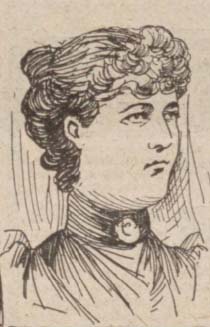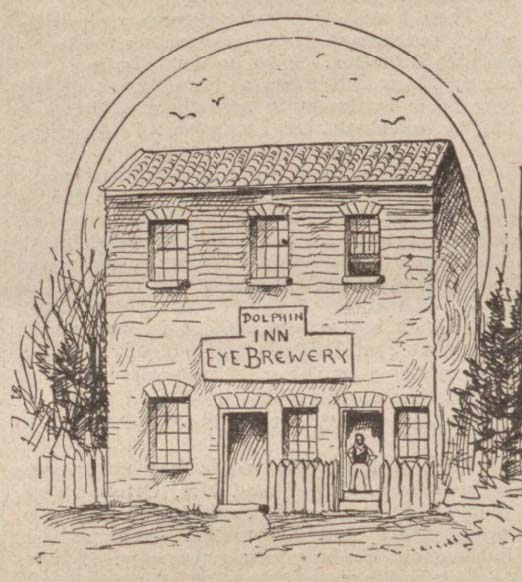

Age: 18
Sex: male
Crime: murder
Date Of Execution: 21 Nov 1899
Crime Location: Wrotham, Kent
Execution Place: unknown
Method: hanging
Executioner: unknown
Source: https://discovery.nationalarchives.gov.uk/details/r/C4134479
George Nunn was convicted of the murder of 33-year-old Eliza Dixon and sentenced to death.
He stopped her as she was going home with some beer for her husband in Wortham near Diss on 8 July 1899 and made an improper suggestion which she rejected and when she resisted he stabbed her in the throat.
At his trial he pleaded not guilty.
A plan of Wrotham was handed out at the trial to aid the proceedings. It showed:
Eliza Dixon had been about 33-years-old, was married and had six children, the youngest of whom had been a baby of eleven months. She assisted her husband in keeping a small pork butcher's shop and received money from the customers.

At about 9.30pm Eliza Dixon went out with her mother to go to a woman's house to attend to some business in connection with the shop after which they returned. Eliza Dixon's mother said that when they returned that Eliza Dixon had been in possession of a purse which her husband believed there to be something like 37s in money.
A little while later Eliza Dixon set out for the Dolphin Inn, taking with her a quart bottle in which to get some stout.
The wife of the landlord at the Dolphin Inn said that Eliza Dixon reached her house about ten minutes before closing time. She said that there had been other people in the house at the time and she asked her to go into a smaller and quieter room. She said that Eliza Dixon asked to be served with a glass of stout to drink at once, and that when she went to fetch it that George Nunn came into the room.
The landlord's wife said that when she returned she found George Nunn in conversation with Eliza Dixon and that it appeared that George Nunn had proposed to treat Eliza Dixon, but that she had declined the offer.
She said that Eliza Dixon then gave her her bottle to fill and that when she left to fill it with stout that George Nunn asked Eliza Dixon to drink with him, and she did.
She said that George Nunn left the house about three minutes before closing time and, in all probability, before Eliza Dixon left.
A man said that he had been coming away from the shop kept by Mrs Lilley and heading towards the Dolphin when he met four or five men who he spoke to, and a little later on, nearer the Dolphin, met a woman, who it was thought, must have been Eliza Dixon.
He said that when he got to the Dolphin he saw George Nunn in the road. He said that George Nunn spoke to him and left. He said that although he didn't see exactly which way he went, it appeared to him that instead of going directly home, that he went straight across the green and intercepted Eliza Dixon who was going round by the road.
A little while later, one of the main witnesses that lived nearby said that he heard a scream, but he said that he paid little attention to it.

At about 11pm, Eliza Dixon's husband began to get a little anxious about the non-appearance of his wife, and he started out to look for her.
He first went to the Dolphin public house and then to the house of the man that heard the scream and they went out together to look for her.
They then went back to the Dolphin public house and on that occasion got information which induced them, along with the other main witness that lived in a house nearby, to go to the house of George Nunn. When they got there they found George Nunn's father was in bed and he came to the window and asked what the matter was and Eliza Dixon's husband told him that his wife was missing and that she was last seen speaking to him.
George Nunn's father told them that George Nunn was in bed and that he would ask him whether he knew anything about Eliza Dixon, and George Nunn was heard to reply, 'No, I saw her at the Dolphin, she was there at closing time. I left her there, and came straight home'.
Nothing more was said and the men went off in search of Eliza Dixon.
Eliza Dixon's husband then went off to Palgrave to report to the police and at about 2am the two main witnesses found the body of Eliza Dixon on the common, lying in a sort of dry gully alongside the road course.

She was terribly mutilated. her feet were in the direction of the road and her clothes were all turned up over her waist and there was a lot of blood about.
The doctor that examined her said that he found fourteen incised wounds about her face and neck as well as marks of violent blows about the face and eyes.
George Nunn later admitted involvement in Eliza Dixon's murder, but claimed that another man had been with him. The other man had been seen in the Dolphin public house as well as by the man that saw Eliza Dixon leaving the public house, amongst the group of four men he saw beforehand. However, whilst the man was of bad character, and that George Nunn had maintained the claim beyond the point that all was hopeless for him, it was thought that the other man might have been involved. However, it was noted that there would need to be proof of that and that it in no way reduced the charge against George Nunn. It was also noted that it was thought that even if the man had been there at the start of the assault against Eliza Dixon, that it was thought probable that he had then run away or at least not taken as full a part as George Nunn. However, no further action was taken against the other man.
George Nunn was tried at the Suffolk Assizes at Bury St Edmunds on 1 November 1899 and found guilty, but with a recommendation to mercy on account of his youth but the judge advised him not to place too much hope on the recommendation and he was soon after executed by James Billington in Ipswich on the 21 November 1899.
see National Archives - HO 144/279/A61425
see Sheffield Evening Telegraph - Thursday 02 November 1899
see Penny Illustrated Paper - Saturday 22 July 1899